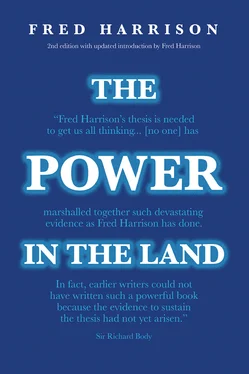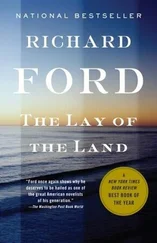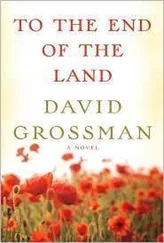Adam Smith would not accept this solution. It is true that he regarded land values as ‘peculiarly’ suitable for taxation, since such a tax falls on an economic surplus and could not be passed on to consumers in the price of goods. 20 The levied tax, furthermore, was in no way a disincentive to the enterprise and effort of workers or capitalists. Land, said Smith, was suited to taxation because its value was difficult to conceal, in contrast to the value of capital. A register of land values could easily be compiled, regular valuations carried out and the tax collected at moderate cost. But he, like the landlords who dominated the British Parliament, resisted the application of the tax on the value of all land. In fact, he explicitly opposed a tax on the rental income which could be imputed to idle land. His reasons for declaring this position illuminate his ideological orientation.
In his discussion on the ‘Taxes upon the Rent of Houses’, Smith twice stated that it would be wrong to levy a tax on unused land. ‘The ground-rents of uninhabited houses ought to pay no tax,’ he declared emphatically. 21 In his review of the position in Holland, he claimed that taxes on uninhabited houses there posed problems for their owners. ‘There seems to be a hardship in obliging the proprietor to pay a tax for an untenanted house, for which he can derive no revenue, especially so very heavy a tax,’ he wrote. 22 He failed to confront other problems associated with empty houses, such as the hardships of people living in slums and workhouses who would have preferred to live in the buildings which remained empty for durations longer than the normal time lapse between occupants on the move. 23 What stopped the owners from off-loading the tax burden, either by selling the houses or letting them to tenants ?
Smith was careful to protect his theory of property with his four famous maxims on taxation, the first of which was that people ought to contribute to the exchequer a proportion of their ‘revenue which they respectively enjoy’. 24 The ability to pay was viewed as conditional on income actually being received, rather than potential income that could be imputed to the possession of a revenue-yielding resource. So a person may own a thousand acres which the citizens of London or New York may wish to use for factories, homes or recreation; but because the owner chooses not to let others have access to them (i.e., he decides to forego the potential income), he ought to be free of tax liability. Such was Adam Smith’s fair play.
Thus it was that priority was accorded to land monopolists. Smith accurately recorded how people were denied access to marginal coal mines 25 (which could only yield sufficient income to pay for the labour and capital inputs), and to unimproved agricultural land, 26 until they were able to pay rent. This was not just a descriptive account, however. Adam Smith, the champion of mass production, the division of labour and competition as the means to achieving the lowest prices possible for industrial products, prescribed as sound policy the increase in the prices of food and raw materials to generate rent for the land monopolists. These price increases, ‘instead of being considered as a public calamity, ought to be regarded as a necessary forerunner and attendant of the greatest of all public advantages’. 27
When Smith noted that ‘rent makes the first deduction from the produce of the labour which is employed upon land’, 28 he was prescribing an order of priorities. Yet in a competitive system, economic rent is a surplus after the deduction of wages (for labour), and interest (for capital) from the value of output.
Smith could have altered the order in which income was distributed, by encouraging the establishment of a competitive system in which landlords were forced to compete through the introduction of a tax on the value of land. He refused to lend his weight to this fiscal reform, which had at the time been promoted by Newcastle schoolteacher Thomas Spence (who was imprisoned for his impudence). 29 Adam Smith thus established an intellectual tradition of opposition to the special taxation of rent that can be traced through the 19th century classical economists beginning with David Ricardo 30 and on to Herbert Spencer. 31 They all had a crystal-clear appreciation of the theory of economic rent, and they understood the macro-economic impact of land monopoly, but they were ultimately unwilling to advocate a fully-fledged fiscal policy designed to destroy the greatest of the monopolies that undermined the operations of the capitalist system.
This tradition was embodied in the British institutions which were subsequently replicated in the colonies right around the world. While the land monopolists could employ anti-social strikes with impunity, withholding land from those who needed to use it, the story was different for the men and women who worked in the factories. When they went on strike, they were severely attacked by the might of the State. A Manchester magistrate condemned ‘This species of restraint or coercion’, for it might ‘be ultimately a great evil as nothing can be more clear than that commerce in every respect should be allowed to be entirely unshakled and free’. 32 Free men in a fair society would have no reason to go on strike, which is an act of desperation; they would have no reason to shackle commerce, for in doing so they cause themselves hardship. But strikes were the name of the game: the rules were originally established by the land monopolists — didn’t they withdraw their acres from production when it suited them ? These rules had been sanctified by Adam Smith. So working people were forced to use the system of withdrawing their labour as the only counter to the unequal power of the landowner and the capitalist. Thus was born a system grounded on the principles of deprivation and conflict.
Notes
1Smith offered us ‘a theoretical perfect machine — the mechanical operation of an economic stabilizer’, according to A. L. MacFie, The Individual in Society, London: George Allen & Unwin, 1967, p. 104.
2C. P. Kindleberger, ‘The Historical Background: Adam Smith and the Industrial Revolution’, in The Market and the State, eds.: T. Wilson and A. S. Skinner, Oxford: Clarendon Press, 1976; and R. Koebner, ‘Adam Smith and the Industrial Revolution’, Econ. Hist. Rev., 2nd Series, Vol. XI, 1959.
3A. Smith, The Theory of Moral Sentiments , 1759; page references are to the edition published by Liberty Classics, Indianapolis, 1969.
4 Ibid., p. 304.
5 Ibid., italics added.
6 Ibid., pp. 304-305.
7 Ibid., p.297.
8Page references are to the Edwin Cannan edition published by The University of Chicago Press, Chicago, 1976.
9 Ibid., p.275.
10 Ibid. Smith appears to contradict himself on this point on p. 335; but this later reference contains no supporting argument, whereas his earlier conclusion — which we accept as the correct one — is fully elaborated. John Stuart Mill arrived at the same conclusion on the distribution of national income in favour of the landlords: see his Principles of Political Economy, Bk V, Ch. 2, sec. 5.
11A. W. Coats, ‘Changing attitudes to labour in the mid-eighteenth century’, Econ. Hist. Rev., Vol. XI, 1958/9.
12See The Theory of Moral Sentiments, and T. Wilson, ‘Sympathy and Self-Interest’, in Wilson and Skinner, op. cit.
13 The Theory of Moral Sentiments, op. cit., p. 162.
14E. H. Phelps Brown, ‘The Labour Market’, in Wilson and Skinner, op. cit.
15 The Wealth of Nations, op. cit., pp. 162, 370.
16 Ibid., pp.276-277.
17 Ibid., p. 56. Our emphases.
Читать дальше












